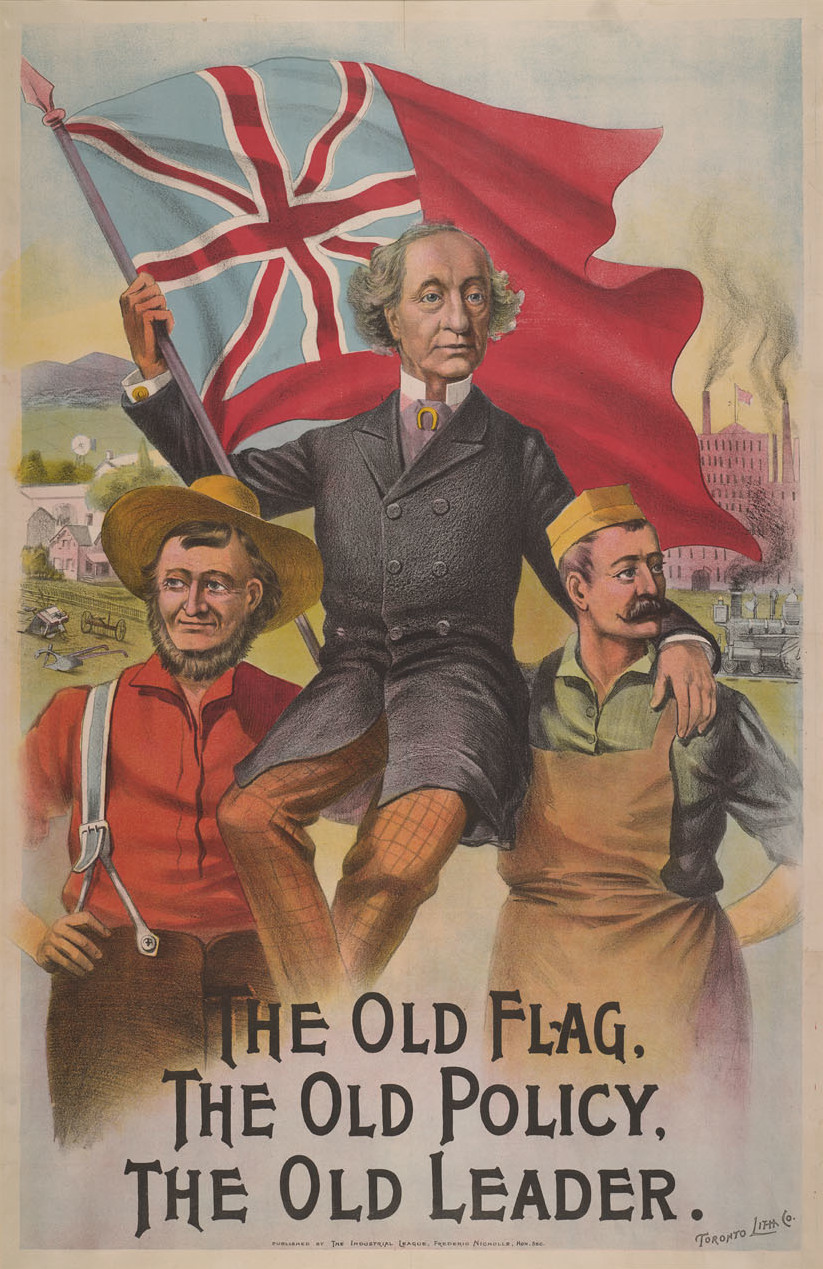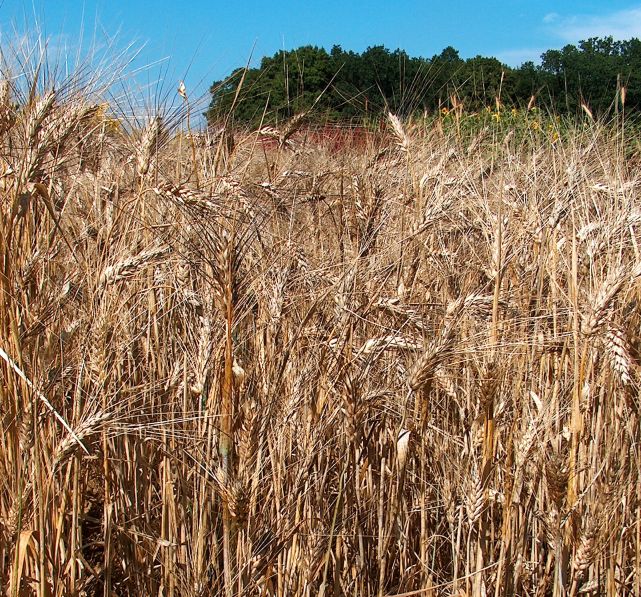|
Dominion Lands Act
The ''Dominion Lands Act'' (long title: ''An Act Respecting the Public Lands of the Dominion'') was an 1872 Canadian law that aimed to encourage the settlement of the Canadian Prairies and to help prevent the area being claimed by the United States. The Act was closely based on the U.S. ''Homestead Act of 1862'', setting conditions in which the western lands could be settled and their natural resources developed. In 1871, the Government of Canada entered into Treaty 1 and Treaty 2 to obtain the consent of the Indigenous nations from the territories set out respectively in each Treaty. The Treaties provided for the taking up of lands "for immigration and settlement". In order to settle the area, Canada invited mass emigration by European and American pioneers, and by settlers from eastern Canada. It echoed the American homestead system by offering ownership of 160 acres of land free (except for a small registration fee) to any man over 18 or any woman heading a household. They did ... [...More Info...] [...Related Items...] OR: [Wikipedia] [Google] [Baidu] |
Parliament Of Canada
The Parliament of Canada (french: Parlement du Canada) is the federal legislature of Canada, seated at Parliament Hill in Ottawa, and is composed of three parts: the King, the Senate, and the House of Commons. By constitutional convention, the House of Commons is dominant, with the Senate rarely opposing its will. The Senate reviews legislation from a less partisan standpoint and may initiate certain bills. The monarch or his representative, normally the governor general, provides royal assent to make bills into law. The governor general, on behalf of the monarch, summons and appoints the 105 senators on the advice of the prime minister, while each of the 338 members of the House of Commons – called members of Parliament (MPs) – represents an electoral district, commonly referred to as a ''riding'', and are elected by Canadian voters residing in the riding. The governor general also summons and calls together the House of Commons, and may prorogue or dissolve Parliame ... [...More Info...] [...Related Items...] OR: [Wikipedia] [Google] [Baidu] |
Settlement Schemes
Settlement may refer to: *Human settlement, a community where people live *Settlement (structural), the distortion or disruption of parts of a building *Closing (real estate), the final step in executing a real estate transaction *Settlement (finance), where securities are delivered against payment of money *Settlement (litigation), a resolution between disputing parties about a legal case *Settlement (trust), a deed whereby property is given by a settlor into trust *Israeli settlement, Jewish civilian communities built on land occupied by Israel See also * * *Act of Settlement (other), various legislation *Settlement Act, or Poor Relief Act 1662 *Collective settlement, another name for an intentional community *Collective settlement (litigation), a legal term *Settler colonialism, replacing the original population with a new society of settlers *Settlement geography, investigating the part of the earth's surface settled by humans * Settlement movement, a Victorian era ref ... [...More Info...] [...Related Items...] OR: [Wikipedia] [Google] [Baidu] |
Canadian Federal Legislation
Canadians (french: Canadiens) are people identified with the country of Canada. This connection may be residential, legal, historical or cultural. For most Canadians, many (or all) of these connections exist and are collectively the source of their being ''Canadian''. Canada is a multilingual and multicultural society home to people of groups of many different ethnic, religious, and national origins, with the majority of the population made up of Old World immigrants and their descendants. Following the initial period of French and then the much larger British colonization, different waves (or peaks) of immigration and settlement of non-indigenous peoples took place over the course of nearly two centuries and continue today. Elements of Indigenous, French, British, and more recent immigrant customs, languages, and religions have combined to form the culture of Canada, and thus a Canadian identity. Canada has also been strongly influenced by its linguistic, geographic, and e ... [...More Info...] [...Related Items...] OR: [Wikipedia] [Google] [Baidu] |
History Of Immigration To Canada
The history of immigration to Canada details the movement of people to modern-day Canada. The modern Canadian legal regime was founded in 1867 but Canada also has legal and cultural continuity with French and British colonies in North America going back to the seventeenth century, and during the colonial era immigration was a major political and economic issue and Britain and France competed to fill their colonies with loyal settlers. Prior to that, the land that now makes up Canada was inhabited by many distinct Indigenous peoples for thousands of years. Indigenous peoples contributed significantly to the culture and economy of the early European colonies, to which was added several waves of European immigration. More recently, the source of migrants to Canada has shifted away from Europe and towards Asia and Africa. Canada's cultural identity has evolved constantly in tandem with changes in immigration patterns. Statistics Canada has tabulated the effect of immigration on popu ... [...More Info...] [...Related Items...] OR: [Wikipedia] [Google] [Baidu] |
Post-Confederation Canada (1867–1914)
Post-Confederation Canada (1867–1914) is history of Canada from the formation of the Dominion to the outbreak of World War I in 1914. Canada had a population of 3.5 million, residing in the large expanse from Cape Breton to just beyond the Great Lakes, usually within a hundred miles or so of the Canada–United States border. One in three Canadians was French, and about 100,000 were aboriginal (First Nation, Inuit, Métis). It was a rural country composed of small farms. With a population of 115,000, Montreal was the largest city, followed by Toronto and Quebec at about 60,000. Pigs roamed the muddy streets of Ottawa, the small new national capital. Besides subsistence agriculture, the economy was based on exports of lumber, fish and grain, and the import of investment capital from London and New York. Factories were small, except for those making farm implements. Overall the economy prospered in the first years of Confederation, but a world-wide depression 1873–1896 sever ... [...More Info...] [...Related Items...] OR: [Wikipedia] [Google] [Baidu] |
1872 In Canadian Law
Year 187 ( CLXXXVII) was a common year starting on Sunday (link will display the full calendar) of the Julian calendar. At the time, it was known as the Year of the Consulship of Quintius and Aelianus (or, less frequently, year 940 ''Ab urbe condita''). The denomination 187 for this year has been used since the early medieval period, when the Anno Domini calendar era became the prevalent method in Europe for naming years. Events By place Roman Empire * Septimius Severus marries Julia Domna (age 17), a Syrian princess, at Lugdunum (modern-day Lyon). She is the youngest daughter of high-priest Julius Bassianus – a descendant of the Royal House of Emesa. Her elder sister is Julia Maesa. * Clodius Albinus defeats the Chatti, a highly organized German tribe that controlled the area that includes the Black Forest. By topic Religion * Olympianus succeeds Pertinax as bishop of Byzantium (until 198). Births * Cao Pi, Chinese emperor of the Cao Wei state (d. 226) * Gu ... [...More Info...] [...Related Items...] OR: [Wikipedia] [Google] [Baidu] |
Legal History Of Canada
Law is a set of rules that are created and are law enforcement, enforceable by social or governmental institutions to regulate behavior,Robertson, ''Crimes against humanity'', 90. with its precise definition a matter of longstanding debate. It has been variously described as a Social science#Law, science and as the art of justice. State-enforced laws can be made by a group legislature or by a single legislator, resulting in statutes; by the executive through decrees and regulations; or established by judges through precedent, usually in common law jurisdictions. Private individuals may create legally binding contracts, including arbitration agreements that adopt Alternative dispute resolution, alternative ways of resolving disputes to standard court litigation. The creation of laws themselves may be influenced by a constitution, written or tacit, and the rights encoded therein. The law shapes politics, economics, history and society in various ways and serves as a mediator of ... [...More Info...] [...Related Items...] OR: [Wikipedia] [Google] [Baidu] |
Economy Of The Northwest Territories
The Northwest Territories (abbreviated ''NT'' or ''NWT''; french: Territoires du Nord-Ouest, formerly ''North-Western Territory'' and ''North-West Territories'' and namely shortened as ''Northwest Territory'') is a federal territory of Canada. At a land area of approximately and a 2016 census population of 41,790, it is the second-largest and the most populous of the three territories in Northern Canada. Its estimated population as of 2022 is 45,605. Yellowknife is the capital, most populous community, and only city in the territory; its population was 19,569 as of the 2016 census. It became the territorial capital in 1967, following recommendations by the Carrothers Commission. The Northwest Territories, a portion of the old North-Western Territory, entered the Canadian Confederation on July 15, 1870. Since then, the territory has been divided four times to create new provinces and territories or enlarge existing ones. Its current borders date from April 1, 1999, when the t ... [...More Info...] [...Related Items...] OR: [Wikipedia] [Google] [Baidu] |
Economy Of Saskatchewan
The economy of Saskatchewan has been associated with agriculture resulting in the moniker "Bread Basket of Canada" and Bread Basket of the World. According to the Government of Saskatchewan, approximately 95% of all items produced in Saskatchewan, depend on the basic resources available within the province. Various grains, livestock, oil and gas, potash, uranium, wood and their spin off industries fuel the economy. As of 2017, Saskatchewan's GDP was approximately C$79.513 billion. Agriculture The Dominion Lands Act was passed in 1872 to encourage an agricultural settlement for a united British North America. The completion of the train link between eastern Canada through the District of Assiniboia in 1885, the development of the high-yielding and early-maturing Marquis strain of wheat and establishment of an import market in the United Kingdom supplied the first impetus for economic development and supported population settlement. World War I had a positive impact on Sas ... [...More Info...] [...Related Items...] OR: [Wikipedia] [Google] [Baidu] |
Economy Of Manitoba
The economy of Manitoba is a market economy based largely on natural resources. Agriculture, mostly concentrated in the fertile southern and western parts of the province, is vital to the province's economy. Other major industries are transportation, manufacturing, mining, forestry, energy, and tourism. The province's economic history dates to before European contact, and was originally based on a First Nations trading network. European traders arrived in the 17th century and organized a trans-Atlantic fur trade. Agricultural settlers arrived in the early 19th century, and Manitoba became a province of Canada in 1870. Economic history Manitoba's early economy depended on mobility and living off the land. Indigenous Nations (Cree, Ojibwa, Dene, Sioux and Assiniboine) followed herds of bison and congregated to trade among themselves at key meeting places throughout the province. After the arrival of the first European traders in the 17th century, the economy centred on the trade ... [...More Info...] [...Related Items...] OR: [Wikipedia] [Google] [Baidu] |
Economy Of British Columbia
British Columbia ( B.C.) is the third largest Canadian province by population and fourth largest provincial economy. Like other provinces in the Canadian federation, B.C. consists of both private and public institutions. However, as Canada's westernmost province, located between the Pacific Ocean and the Rocky Mountains, B.C. has unique economic characteristics that distinguish it from much of the rest of Canada. Economic Geography Geography has played a significant role in the province's economic development. B.C.’s location on Canada's west coast puts it at the commercial crossroads of the Asia-Pacific region and North America. B.C. is geographically characterized by mountainous topography along with substantial areas of lowlands and plateaus. Though less than 5% of B.C.’s land is arable due to mostly mountainous terrain, the province is agriculturally rich. This can be attributed to relatively mild weather along the Pacific Northwestern coast and in various sheltered ... [...More Info...] [...Related Items...] OR: [Wikipedia] [Google] [Baidu] |
.jpg)





